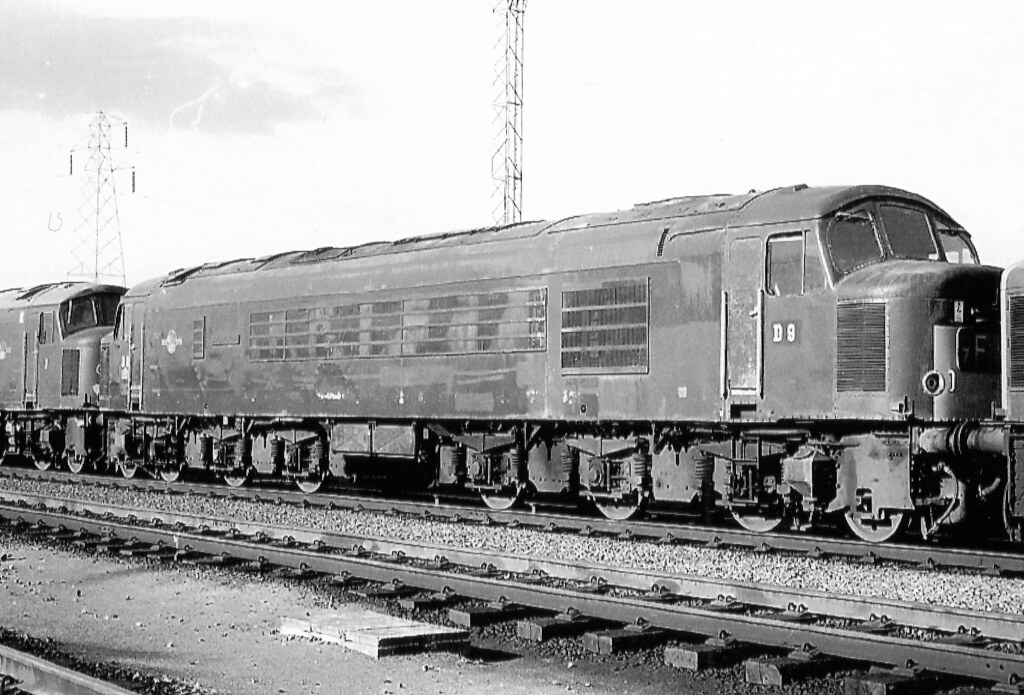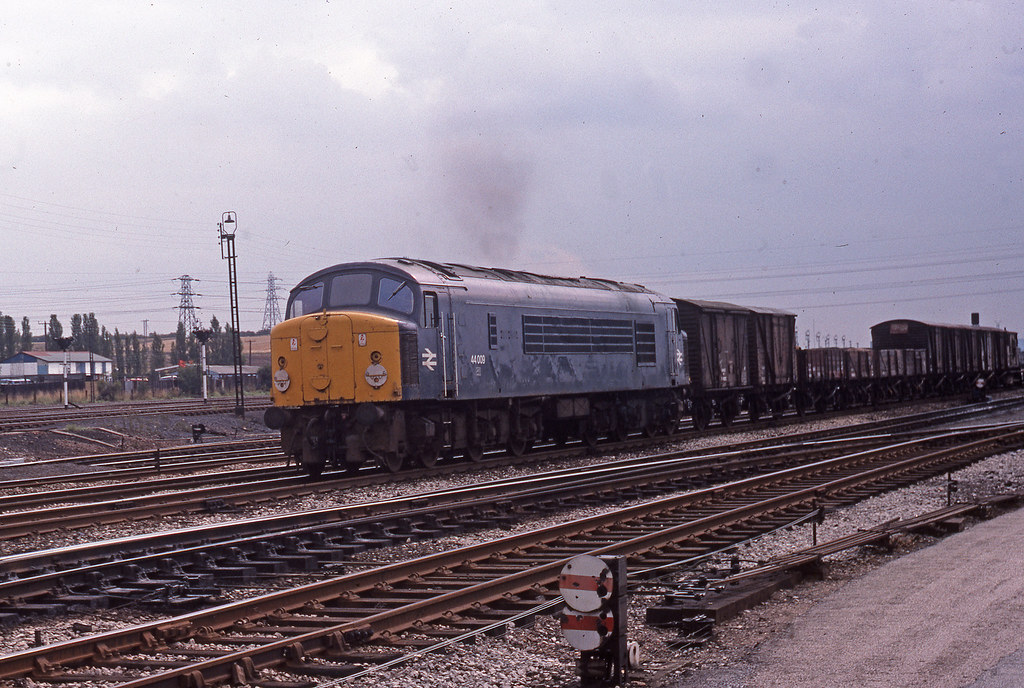LNW-GW Joint
Veteran Member
It was just GEC from 1968 onwards...View attachment 109027
Interestingly, the April 1971 cover of Modern Railways has this artists impression of an "87" as part of an English Electric / AEI advert.
It was just GEC from 1968 onwards...View attachment 109027
Interestingly, the April 1971 cover of Modern Railways has this artists impression of an "87" as part of an English Electric / AEI advert.
Display on the front to convey information to the signaller faded out in the 1970s (as already stated above). However, that didn't mean they stopped displaying info; sometimes the crew put the code in 'for fun'; sometimes they were simply left in whatever state they were in (so showing 'rubbish' as far as that particular service is concerned). Gradually the boxes were plated over.
Is it correct that when domino glasses were smashed (due to running not vandalism or anything) they were replaced with a plate rather than faffing about trying to source a new glass?Consideration was given as early as 1970, as the maintenance of the displays was costing BR a fortune.
That I don't know, but I'll see what I can find out.Is it correct that when domino glasses were smashed (due to running not vandalism or anything) they were replaced with a plate rather than faffing about trying to source a new glass?
I was thinking about more high speed examples of the time.. like 55's, 86's etc.. but it seems class 86's were plated over no matter what.
Saying that, some other classes had a plate on one end and a domino on the other. 45's and of course 47 555 spring to mind, the latter I think was plated over at a later date.
Thanks.That I don't know, but I'll see what I can find out.
As a slight aside, the side displays of Pendolinos show the headcode in the "train number" field.
In a lot of these instances the end with the plate was a collision damage repair. In those days there were a lot of collisions.Saying that, some other classes had a plate on one end and a domino on the other. 45's and of course 47 555 spring to mind, the latter I think was plated over at a later date.
For quite a few months after most locos were wound to 0000 Knottingley merry go round workings continued to display their 6Kxx reporting numbers as though nothing had changed. They finally fell into line some time in 1976 although could have been late 75,memory is getting a bit hazy nowIn a lot of these instances the end with the plate was a collision damage repair. In those days there were a lot of collisions.



Yes, the advert has both the English Electric and AEI logos prominently displayed and then in very small letters - "English Electric-AEI Traction Ltd" - A subsidiary of GEC power engineering limited. Seems like they weren't pushing the GEC image at that stage. Also, the locomotive is described as being of 5,100 hp. The 87s were 5,000 werent they? So they lost 100hp with the headcode.It was just GEC from 1968 onwards...

As an aside, SWR's 455s still display the SR headcode on their nearside roller blindWith the exception of the Southern two-digit headcodes which remained until 2004
That's been my suspicion as well.Regarding HST's, I've always wondered if the original purpose of the large window below the windscreen on the prototype power cars was to contain a headcode box/indicator, with the feature being deleted either at a a very late stage of design or after production started. It's certainly an unnecessarily large expanse of glass to merely house head, tail and marker lights.
As an aside, SWR's 455s still display the SR headcode on their nearside roller blind

1023 had dominos fitted just before it worked a tour on the Eastern Region (need to check, but think it was ‘The Western Talisman’)If I recall most of the Westerns had the loco number on the head code blinds in their final days.
Yes, it was the "Western Talisman". The story was that the Eastern Region insisted on dominoes, but that may be an urban myth.1023 had dominos fitted just before it worked a tour on the Eastern Region (need to check, but think it was ‘The Western Talisman’)
And some of the Pope specials had HF (Holy Father)Didn't the Charles & Di honeymoon special have a class 73 displaying headcode CD?
Yes....and up ECS/van trains arriving in Clapham Junction Up Main Loop, prior to shunting into the yard, carried headcode 02.And ECS into Waterloo carried the headcode of the outgoing service though the same did not apply with down trains. I have this vague memory of 01 and 03 on down ECS, distinguishing between Clapham Yard and Wimbledon.
Surely that was wrong? The rear of the train should have carried the red panels in the headcode display to protect the rear of the train????And ECS into Waterloo carried the headcode of the outgoing service though the same did not apply with down trains. I have this vague memory of 01 and 03 on down ECS, distinguishing between Clapham Yard and Wimbledon.
Yes, in contrast to post #53.Surely that was wrong? The rear of the train should have carried the red panels in the headcode display to protect the rear of the train????
I remember that in January 1976 and at the time wondered why all trains were displaying 0O00. Shortly after the class 52 Westerns used to display the loco number instead of 0O00 and also class 50s, minus one of the zeros in the number. Although with the 50s I’m not sure how long this continued as I remember by the summer of 1976 was the first time I saw a 50 with the display plated over with two lights replacing the headcode.January 1976 for some reason is sticking in my mind and this was across the whole BR network, from what I can remember the majority of locomotives and units from that month had their 4 character headcode boxes set to display 0O00.
